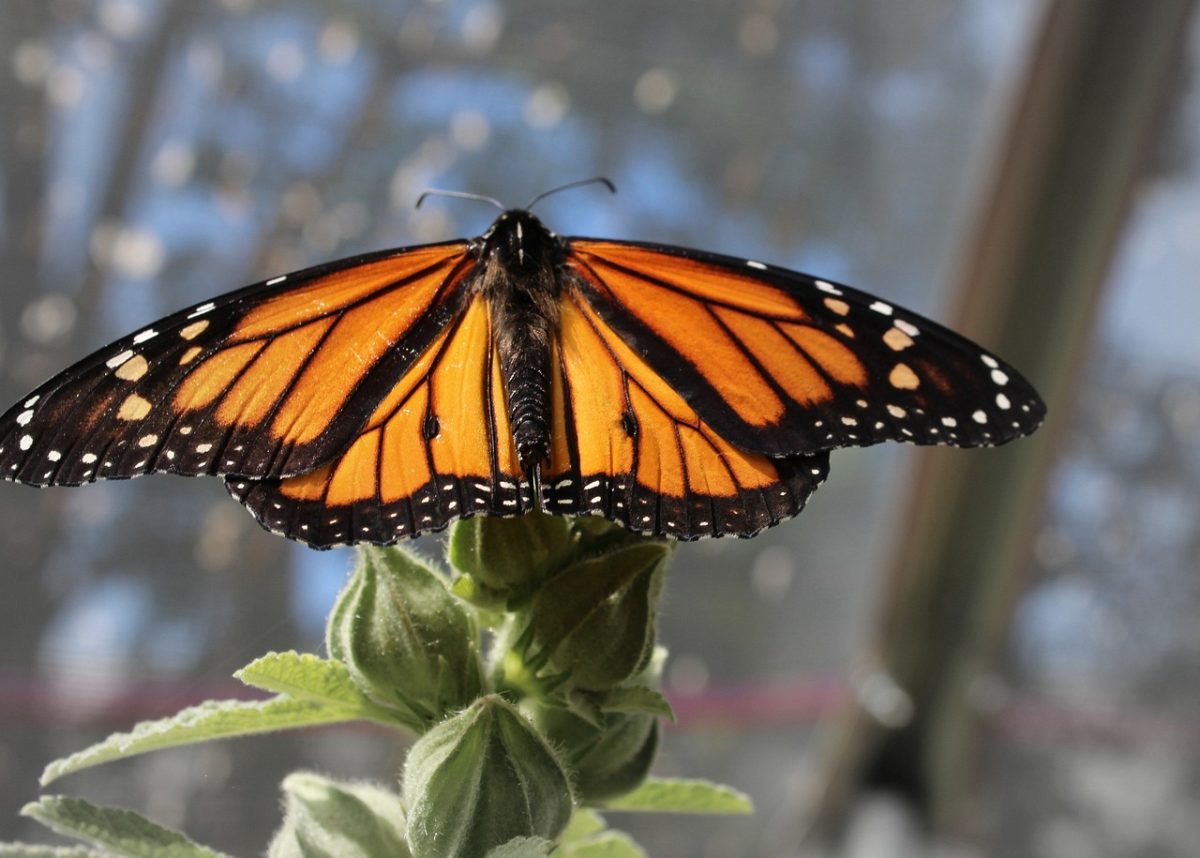Asclepia Curassavica, also known as tropical milkweed, may be the key to saving the ever decreasing population of the Monarch butterfly, despite the rising conflict between academics and native plant advocates.
The warnings are never obvious, but the signs of impending environmental degradation, even collapse, are all around us. The collapse of the Monarch population is just one such indicator. It’s not just the plant enthusiasts within the Mt. SAC horticultural department who care about this issue, but every person who cares about maintaining a thriving, sustaining ecosphere may want to take heed of this sign.
Milkweed is what Monarch butterflies eat. There are many different species that exist here in California. Some are native to the state, such as Asclepia fascicularis whose thin leaves the butterflies voraciously consume before they build their cocoon and begin the process of metamorphosis. The plants are left as little more than sticks after the Monarchs have dined on them.
Interestingly, the California native milkweed is not the preferred meal of the meal of the Monarchs. That distinction goes to the tropical milkweed with its larger, more tender and voluminous leaves. Also, the tropical is a bigger and more resilient plant that more easily survives the onslaught of Monarchs.
However, according to Ben Reed Brown, an adjunct professor in home gardening and a graduate of Cal Poly Pomona, the milkweed is “actually toxic” in small amounts.
Brown theorizes that the toxics in the milkweed both helps and harms the Monarchs. It helps them by making them toxic to birds and other potential predators, but also, in large enough amounts, they could also be toxic to the Monarchs themselves. These higher concentrations are found in the lush leaves of the tropical milkweed.
Unfortunately, according to the Xerces society, a non-profit environmental organization that focuses on the conservation of invertebrates, the tropical milkweed can cause disruption in breeding for the butterflies and well as throwing off their migratory patterns and even serve as hosts for certain mites that could be potentially be lethal to the Monarchs.
Certain academics take exception to the vilification of Asclepias Curassavica as a food source for the Monarchs. Hugh Dingle, distinguished professor emeritus of entomology, behavior and evolution at UC Davis and now a Marin County resident, is an internationally known expert on animal migration, said on the UCANR.edu website, that the bans are “basically a wasted effort” and that the focus should be on larger threats such as pesticide and herbicide use. All species of milkweed carry parasites that can affect monarch populations.”
On their website, the Xerces Society acknowledges that there are other factors involved including loss of breeding habitat, increased use of pesticides, climate change and logging and development that leads to habitat loss for the Monarchs.
Why, however, has Tropical milkweed become such a flashpoint for conservationists and academics alike? The simple answer is people.
With the staggering and dismaying collapse of this invertebrate staring people in the face, many asked themselves, ‘What can I do to support the butterflies and bring back their habitat?’ The simple answer is plant milkweed. But which one? The easy answer is both, but in proportional amounts.
Prior to beginning their metamorphosis, Monarchs are voracious eaters. During these periods, mainly the Spring and Summer months, it would be useful to have as much edible material for the Monarchs. After that, however, it’s best practice to remove the tropical milkweed completely so that it does not confuse and negatively impact their migratory patterns.
Like so many citizen scientists’ efforts to help the Monarch populations, experts need to be aware and conscientious of how their acts impact these amazing pollinators. So, if you are going to plant and nurture milkweed to feed Monarchs, be aware of the different species of milkweed and how they will help and potentially harm their recovery.



